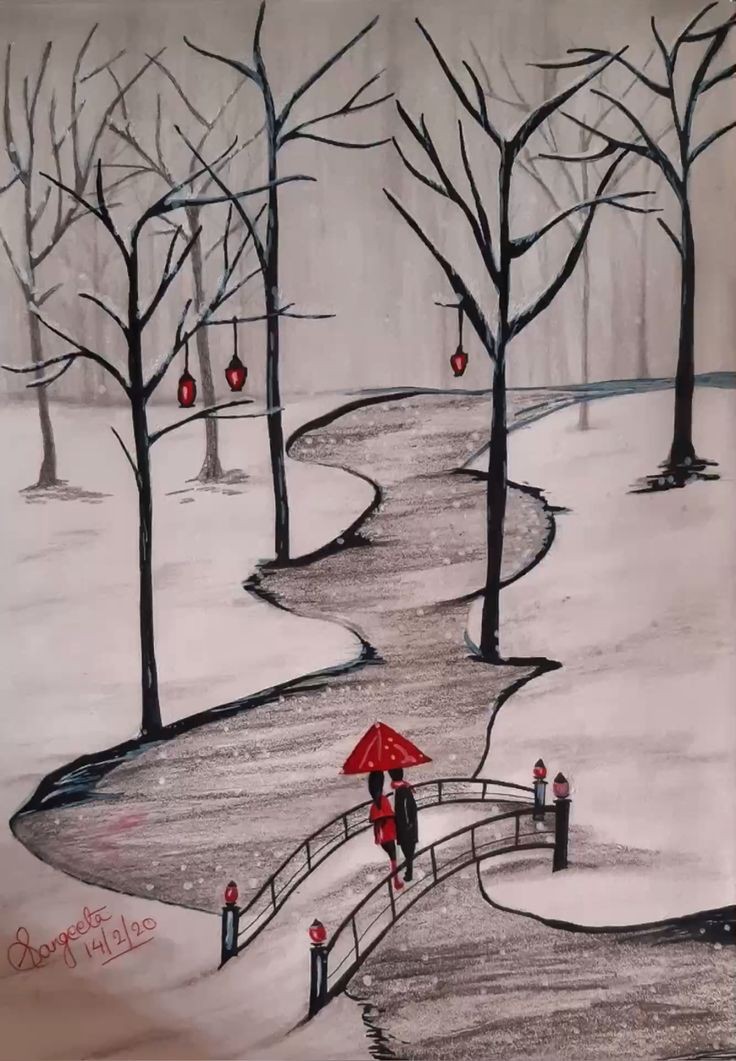Mastering Pencil Drawing: Techniques, Tips, and Inspiration
Pencil drawing is a timeless art form that combines simplicity with profound depth. Whether you’re a beginner or a seasoned artist, mastering pencil drawing can enhance your artistic skills and open up endless creative possibilities. In this article, we’ll explore the essentials of pencil drawing, including techniques, tips, and inspiration to help you elevate your art.
The Basics of Pencil Drawing
Pencil drawing involves using pencils to create images through shading, lines, and textures. The beauty of pencil art lies in its versatility and the ability to achieve a wide range of effects with minimal tools. Here’s a rundown of the fundamental aspects of pencil drawing:
1. Understanding Pencil Types
Pencils come in various grades, each offering different levels of hardness and darkness:
H Pencils: Hard pencils that produce lighter marks. Ideal for fine lines and details.
B Pencils: Soft pencils that create darker, softer marks. Perfect for shading and depth.
HB Pencils: Medium hardness, suitable for general-purpose drawing.
2. Selecting the Right Paper
The texture and quality of the paper significantly affect the outcome of your drawing:
Smooth Paper: Best for detailed work and fine lines.
Textured Paper: Adds a unique texture to your drawing, enhancing shading and depth.
Essential Techniques for Pencil Drawing
Mastering pencil drawing involves learning several key techniques that will help you achieve realistic and expressive results:
1. Basic Lines and Shapes
Start by practicing basic lines and shapes:
Lines: Draw straight, curved, and diagonal lines to build control and precision.
Shapes: Practice drawing basic shapes like circles, squares, and triangles to understand proportions and form.
2. Shading Techniques
Shading adds depth and dimension to your drawings. Here are some common techniques:
Hatching: Create parallel lines to build up texture and tone.
Cross-Hatching: Overlay lines in different directions to intensify shading.
Blending: Use a blending stump or your fingers to smooth out transitions between light and dark areas.
3. Creating Texture
Texture brings your drawing to life. Experiment with techniques to create various textures:
Stippling: Use small dots to build up shading and texture.
Scrumbling: Apply random, circular strokes to create a rough texture.
4. Proportions and Perspective
Accurate proportions and perspective are crucial for realistic drawings:
Proportions: Use guidelines and reference points to ensure correct proportions.
Perspective: Understand the basics of one-point and two-point perspective to create depth and dimension.
Tips for Improving Your Pencil Drawing Skills
To elevate your pencil drawing skills, consider these practical tips:
1. Practice Regularly
Regular practice is essential for improvement. Set aside dedicated time each day or week to draw, experimenting with different subjects and techniques.
2. Use References
Refer to photographs or real-life objects for accuracy and inspiration. Observing real-world details can enhance your understanding of form and texture.
3. Experiment with Styles
Don’t be afraid to experiment with different drawing styles, from realistic to abstract. Exploring various approaches will help you discover your unique artistic voice.
4. Study Other Artists
Analyze the work of other pencil artists to understand their techniques and styles. Pay attention to how they handle shading, texture, and detail.
5. Keep a Sketchbook
Maintain a sketchbook to track your progress, jot down ideas, and practice different techniques. It’s a valuable tool for personal growth and creativity.
Inspiration for Pencil Drawings
Here are a few inspiring subjects to explore in your pencil drawings:
Portraits: Capture the likeness and personality of people or animals.
Landscapes: Draw scenes from nature, including trees, mountains, and bodies of water.
Still Life: Create compositions of everyday objects, such as fruit, flowers, or household items.
Abstract Art: Experiment with shapes, lines, and shading to create unique abstract compositions.
Conclusion
Pencil drawing is a versatile and rewarding art form that allows for endless creativity and expression. By mastering basic techniques, practicing regularly, and drawing inspiration from various sources, you can enhance your skills and create captivating pencil art. Whether you’re sketching a simple still life or tackling a complex portrait, the principles of pencil drawing will guide you in producing beautiful and evocative artworks. So grab your pencils, embrace your creativity, and start your journey to becoming a master of pencil drawing!






